Jul 29, 2020
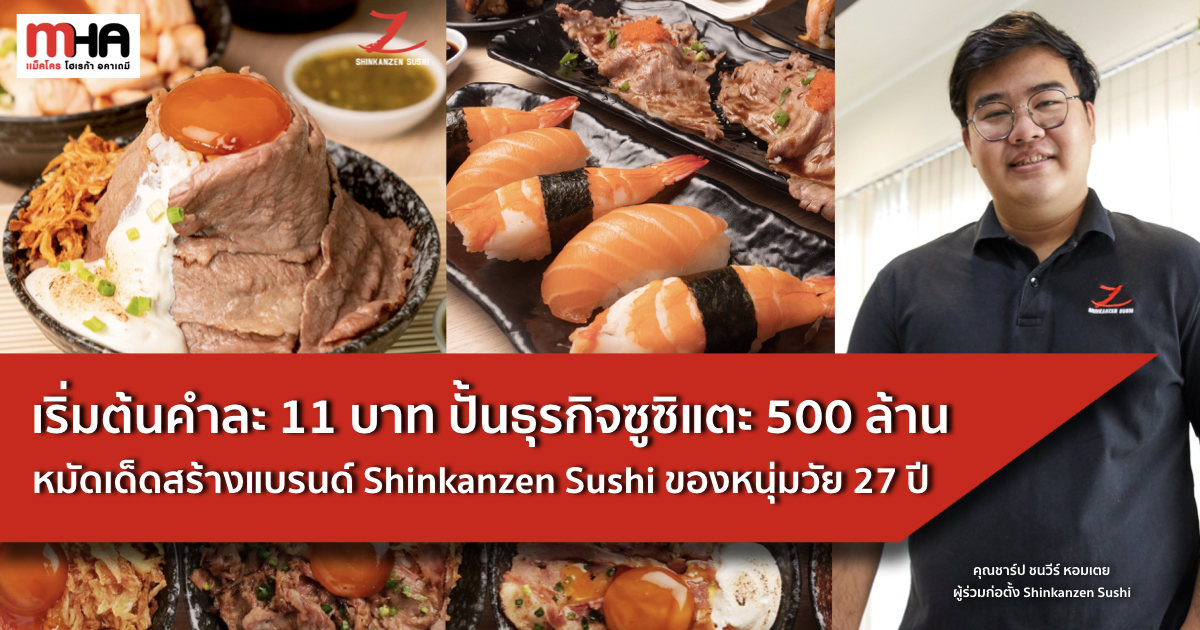
Sushi is food from the land of raw fish that is a hit with Thai people. It’s also at the top of the list for people who are looking for a career by opening their own restaurant. If you’re one of the dreamers who want to open a sushi restaurant, we’re inviting you to look behind the scenes of the shaping of a sushi brand with up to 28 branches which started from a 6-figure investment fund. However, currently the brand’s sales have been reaching 500-million baht for the past five years. In addition, during this Covid-19 crisis, the brand has still been selling well enough to support up to 670 employees without having to lay off anyone. All of the above is the work of 27-year-old Mr. Chanawi “Sharp” Homtoei, the brand’s co-founder.
- A Sushi Restaurant That Started during the University Days
- From within TU Fences to an Expansion with up to 28 Branches
- Strategies to Make the Restaurant Succeed!
- Covid-19: The First Crisis
- Keep the People… The Key to Fast Recovery
- Stock, Kitchen and Storefront Service Management Changes During the New Normal
- The Secret to Being Successful Like Shinkanzen Sushi

A Sushi Restaurant That Started during the University Days
“Before it became Shinkanzen Sushi, during two of my university years, I had a Japanese-style ice cream shop that sold very well. However, a while after I opened, many dessert shops also opened and made my sales drop like it was fading out. The shop wasn’t as popular as before, so I thought I’d change from selling desserts to selling meat dishes. I looked for popular Japanese food and landed on sushi because there was no city-style sushi place near Thammasat University (the original location of the restaurant and Mr. Sharp’s alma mater).”
“I’d never done sushi before, so I looked for a partner: Mink (Suphanat Satcharattanakun, co-founder). Since, in the early days of Instagram, 80% of the pictures posted by Mink was of sushi, I thought this friend could be a partner. However, Mink had only eaten sushi, but had never made any. So, in the beginning, we learned how to make sushi together, from cooking rice, slicing fish and buying ingredients to making a list of suppliers. Of course, we also thought of Makro.”
“When we first opened the sushi restaurant, we still sold desserts, too. Later, we opened Shinkanzen Sushi full-scale. When we first started, there weren’t as many Japanese restaurants as there are today. There were only high-end restaurants and not many cheaper ones. Fortunately, we were able to enter the less expensive sushi market rather early on, so we didn’t have too much competition. After I graduated, we established Food Selection Co., Ltd.”
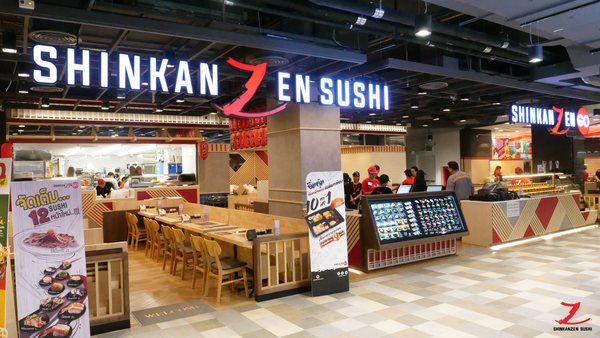
From within TU Fences to an Expansion with up to 28 Branches
“Soon after I graduated, once we’d set up an office system and finished creating our central kitchen, we started to expand. At first our target group was students. After we started expanding, we found that we actually had another group of customers, first jobbers (recent graduates), who created a demand for more restaurants in the city. Then we started to target families because they look for worthwhile and inexpensive products.”
“After we entered shopping centers, we had one emerging feedback theme: customers wanted to order food to take home, but didn’t want to wait. In the beginning, when a customer placed a take-home order, the order would have to wait in line along with orders from dine-in customers. This meant if there were 10 tables of dine-in customers, the take-home customer’s order would be 11th in line. They’d have to wait from the 1st to the 11th order. We thought customers probably wouldn’t want to wait that long and, if the line was long, they might decide not to buy and go to some other restaurant. It became a problem we needed to solve, so we opened ShinkanzenGo two years ago. It’s separate from Shinkanzen Sushi. Customers can come anytime. Their orders won’t be mixed in the dine-in customers’. We make it and they can pick it up, pay and go home. At large branches, like the Samyan Mitrtown branch, ShinkanzenGo is included in the Shinkanzen Sushi, although some branches are just small kiosks inside supermarkets such as Mega Bangna, Robinson Bangrak and Robinson Srisaman. That’s how we meet customer demands.”
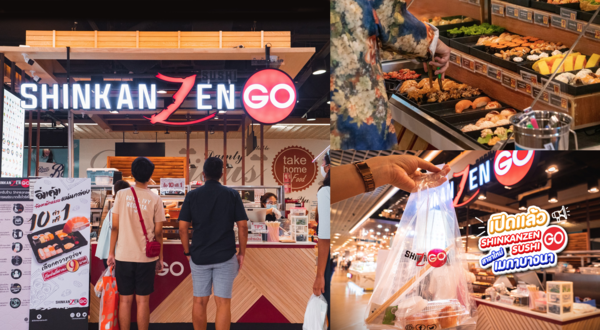
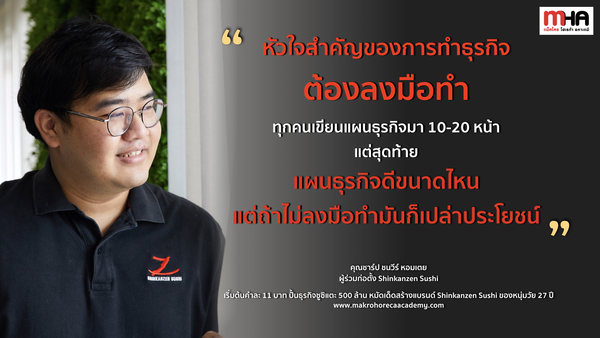
Strategies to Make the Restaurant Succeed!
At first, we only did marketing through Facebook. It was word of mouth. We emphasized sharing, checking in and posting, so people could join our Facebook activities. We gave out sushi dolls and joined in activities. If we went to Japan, we’d bring back souvenirs for our customers. All of these activities were emphasized. We did that for a year.”
“Later on, we started to change our promotions to what restaurants actually do, which is lowering our salmon to 11 baht per piece. The Shinkanzen Sushi’s most famous promotion. We also sold salmon for 11 baht in a month when salmon prices went up and everybody thought salmon was expensive. Actually, our salmon cost at the time was about 8-9 baht per piece, but we wanted to build our brand as soon as possible. It became the talk of the town for that zone. Customers flocked to eat it.”

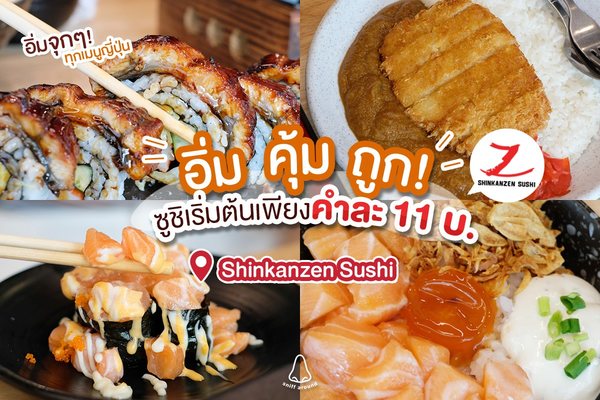
Covid-19: The First Crisis
“The first wave was when we had to close our restaurants. Sales dropped. Fortunately, we were already doing deliveries. The second was when there was news that you could get Covid-19 by eating salmon. It made our sales disappear for 2 days. People started to worry and stopped eating fish and Shinkanzen Sushi mainly sells salmon. When the Japanese Embassy corrected the news, customers started coming back. The third wave was when China discovered Covid-19 in Norwegian salmon at a butcher’s, although we were only affected for 2 days before bouncing back. We faced 3 waves before the government announced that we could open again. Now we’re back 100%.”
“Were we affected for three months? Our sales dropped almost 20% from the total sales. However, from the food business point of view, if we were affected as much as 50%, we’d still survive.”
“Another one of our ‘hero’ products is pickled eggs. It’s a new product from Shinkanzen Sushi that sells quite well. About 50% is from delivery. I think if we hadn’t thought of this dish… There are many Japanese food brands and you can choose any of them, but if you want pickled eggs and Japanese food, you’d have to choose us. We really give everything and promote every channel, starting with marketing, thinking up pickled egg-related content and ads. We can think up things quickly. Think today and do tomorrow. Also, a lot of customers respond to pickled egg dishes. About 200,000 customers access this promotion on Facebook.”
“We’re still emphasizing delivery promotions. Right now, we’re pairing up with Shopee to sell deals in the form of coupons and then customers would buy the food at the storefront. Selling at the storefront has its advantages in that it increases the storefront traffic and draws in customers from different places to eat at our restaurants more using this discount coupon. We’ve sold over 3,000 coupons. One coupon is for one product. That means when they come to our restaurant, they can use 1 coupon to buy 1 product and as long as they’re here, they might as well order eat other things. So, of course, they’d buy additional products.”
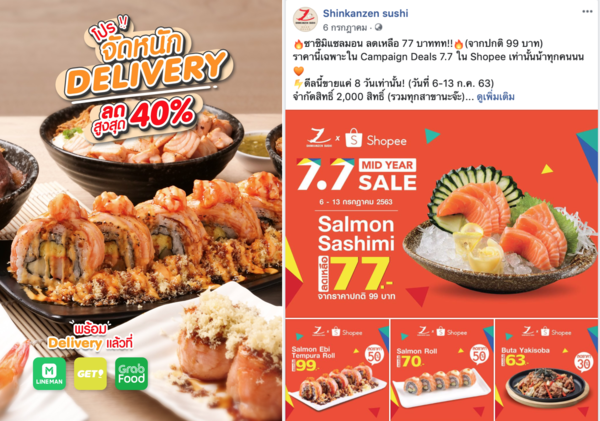
Keep Your People… The Key to Fast Recovery
“We don’t have a policy to reduce our employees or lay them off. Of our 670 employees, we’ve saved just about everybody. We had to talk to them and request the cooperation of employees who wanted to go home. We gave them a chance to give notice in advance or take some time off. Part-time employees, who were students, were the exception. We really couldn’t save them. As for part-time employees who had been with us for a long time, we promoted them all to full-time employees.”
“As for our office, we reduced the workload. Everybody worked for half a month and got support from social security for the other half. We leaned toward saving employees and it was fortunate that we did because at the time we talked about how to maintain the cost of labor (COL) at about 13% of total sales and it would’ve been a lot if we had to pay in full. Luckily, we had employees who were ready to support our company. I have to thank our employees for giving their full support. Finally, after the government announced the easing of restrictions, with the advantage of having saved our employees, we were able to open on the first day. On the first day, many of our branches’ sales reached a new high.”
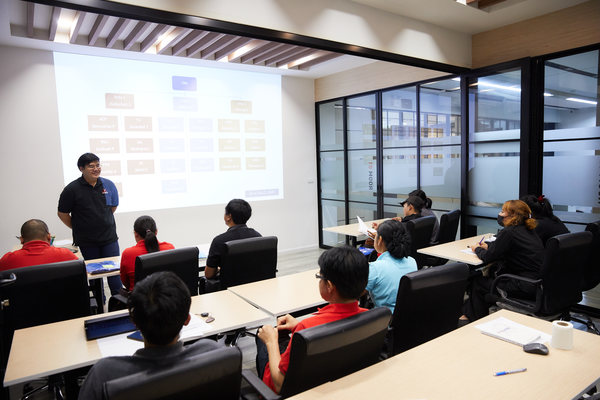
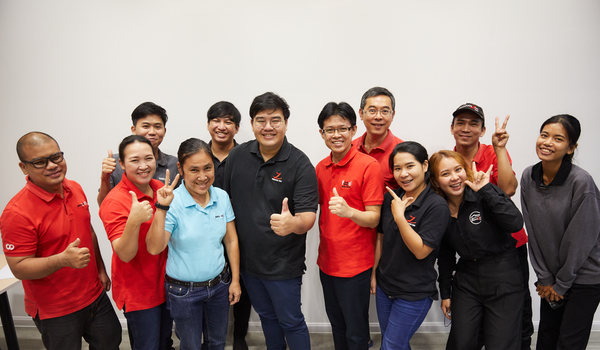
Stock, Kitchen and Storefront Service Management Changes During the New Normal
“First is our central kitchen. We plan to expand our central kitchen. We’re trying to ease the burden at the storefront. For example, most Japanese restaurants send whole fish to be sliced at the storefront, but we do this from the central kitchen. We use an innovation which is paper towel that absorbs fish blood and oil. If these aren’t absorbed, the salmon will have an odor. In Japan, this method is used for omasake. It also allows salmon to be stored longer and ages the fish. The more aged, the better it tastes. We do this and then send the fish to the storefronts where the fish is unwrapped and sold without having to go on the cutting board again.”
“As for stock management, we manage things from the central kitchen and then send them to the storefronts. Some branches have a stocking zone provided by the mall. There isn’t a lot of issues with the stock when sales are low, but when sales are high, we have to keep a large stock and have to find more storage space. That’s when selling really well starts to become a problem. Now, we’ve solved this issue by delivering ingredients more frequently. Our warehouse has to make deliveries almost daily. We usually deliver every other day and sort ingredients into cold and dry ingredients. As I said, rent is charged by the square meter. We don’t want to waste the space for storage.”
“During the new normal, we have measures for employees to wear masks and gloves for both servicing and in the kitchen. We were already doing this before in the kitchen, but in our operation during Covid-19, we’re also checking temperatures and scanning orders using QR codes. We also have an operation team to keep checking whether employees are following the rules and to train every storefront employee. Storefront employees have to be trained by our operation team about what our organization’s culture is like. They get trained on how to handle customers when there’s a complaint or on the mindset when talking with customers. We emphasize service psychology. They have to study before servicing customers and tested before going to handle customers.”

The Secret to Being Successful Like Shinkanzen Sushi
“The core principle of running a business is to actually do it. I used to teach Thammasat University or vocational school students. Everyone wrote 10 – 20 pages of business plans. In the end, however, it doesn’t matter how good your business plan is if you don’t implement it. It’s not wrong to be cautious. It’s even encouraged because investments are risky, but thinking and not doing, that’s wrong.” Everyone wrote
“As I said, after I opened a dessert shop, I also thought it couldn’t continue. However, when you start doing it and it fails, there are two options: quit, or another way is to improve and build on it or change the ice cream shop into something else. Obviously, I chose to keep fighting.”
“Shinkanzen Sushi has faced a lot of problems, but there’s a solution to every problem. Is Shinkanzen Sushi the best Japanese restaurant in terms of flavors? I’d say no. However, it’s a restaurant people can eat at every day. Customers eat at our restaurant and feel it’s more worthwhile than other brands. I think we’ve already won.”

